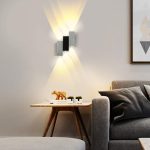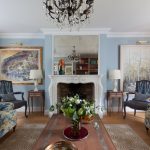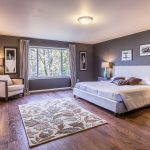
Lighting plays a crucial role in creating the perfect ambiance and atmosphere in any living room. It not only illuminates the space but also enhances the overall aesthetic appeal of the room. Whether you want to create a cozy and intimate setting or a bright and vibrant space, the right lighting fixtures can make all the difference. In this article, we will explore the importance of lighting in a living room and provide tips on how to choose the right fixtures for your space.
Understanding the Importance of Lighting in Your Living Room
The impact of lighting on mood and ambiance cannot be overstated. The right lighting can instantly transform a dull and lifeless room into a warm and inviting space. Soft, warm lighting can create a cozy and intimate atmosphere, perfect for relaxing or entertaining guests. On the other hand, bright and vibrant lighting can make a room feel more energetic and lively.
In addition to setting the mood, lighting also plays a crucial role in highlighting décor and architectural features in your living room. By strategically placing lighting fixtures, you can draw attention to artwork, furniture, or other decorative elements in the room. This not only adds visual interest but also creates a focal point in the space.
Another important aspect of lighting in a living room is task lighting. Task lighting refers to fixtures that provide focused illumination for specific activities such as reading, working on a laptop, or playing board games. It is important to have adequate task lighting in functional spaces to ensure optimal visibility and prevent eye strain.
Types of Lighting Fixtures for Your Living Room
There are various types of lighting fixtures that you can choose from to illuminate your living room. Each type serves a different purpose and can be used to create different effects in the space.
Ceiling fixtures are one of the most common types of lighting fixtures used in living rooms. They provide general illumination for the entire room and come in a variety of styles, from chandeliers to flush mount fixtures. Ceiling fixtures can be a statement piece in your living room and add a touch of elegance and sophistication to the space.
Floor lamps are another popular choice for living rooms. They provide both ambient and task lighting and can be easily moved around to different areas of the room. Floor lamps come in a variety of styles and designs, allowing you to find one that complements your décor.
Table lamps are a great option for adding task lighting to specific areas in your living room, such as side tables or console tables. They come in various sizes and styles, allowing you to choose one that fits your space and personal style.
Wall sconces are a versatile lighting option that can be used to create ambient or accent lighting in your living room. They can be mounted on the wall at different heights and angles to create different effects. Wall sconces are particularly useful for highlighting artwork or architectural features.
Accent lighting is used to draw attention to specific areas or objects in your living room. It can be achieved through the use of spotlights, track lighting, or recessed lighting. Accent lighting adds depth and dimension to the space and creates visual interest.
How to Determine the Right Size of Lighting Fixtures for Your Living Room
When choosing lighting fixtures for your living room, it is important to consider the size of the fixtures in relation to the size of the room. Choosing fixtures that are too small or too large for the space can throw off the balance and make the room feel disproportionate.
There are several factors to consider when determining the appropriate size of lighting fixtures for your living room. First, consider the height of the ceiling. For rooms with high ceilings, larger fixtures can help fill the vertical space and create a more balanced look. On the other hand, rooms with low ceilings may require smaller fixtures to avoid overwhelming the space.
Next, consider the size of the room itself. Larger rooms may require multiple fixtures or larger fixtures to adequately illuminate the space. Smaller rooms, on the other hand, may only require one or two smaller fixtures.
It is also important to consider the scale of the furniture in the room. If you have large furniture pieces, such as a sectional sofa or a large coffee table, you may need larger fixtures to balance out the scale. Conversely, if you have smaller furniture pieces, smaller fixtures may be more appropriate.
To determine the right size of lighting fixtures for your living room, it is helpful to measure the space and take note of any architectural features or furniture that may impact the placement and size of the fixtures. This will ensure that you choose fixtures that fit seamlessly into your space and enhance its overall aesthetic appeal.
The Best Lighting Styles for Your Living Room
Choosing the right lighting style for your living room is essential for creating a cohesive and harmonious look. There are various lighting styles to choose from, each with its own unique characteristics and design elements.
One popular lighting style for living rooms is contemporary or modern lighting. This style is characterized by clean lines, minimalistic designs, and sleek finishes. Contemporary lighting fixtures often feature geometric shapes and metallic accents, adding a touch of sophistication to the space.
Traditional lighting styles are another popular choice for living rooms. These fixtures are often ornate and feature intricate details and decorative elements. Traditional lighting can add a sense of elegance and timeless beauty to your living room.
Industrial lighting styles have gained popularity in recent years. These fixtures are inspired by factories and industrial spaces and often feature exposed bulbs, metal finishes, and raw materials. Industrial lighting can add a touch of edginess and urban charm to your living room.
For a more rustic or farmhouse-inspired look, consider using rustic lighting fixtures. These fixtures often feature natural materials such as wood or wrought iron and have a weathered or distressed finish. Rustic lighting can create a cozy and inviting atmosphere in your living room.
When choosing a lighting style for your living room, it is important to consider the overall décor and design of the space. Choose a style that complements your existing furniture, color scheme, and architectural features. This will ensure that the lighting fixtures seamlessly integrate into the space and enhance its overall aesthetic appeal.
Tips for Choosing the Best Bulbs for Your Lighting Fixtures

Choosing the right bulbs for your lighting fixtures is just as important as choosing the fixtures themselves. Different types of bulbs have different characteristics and can create different effects in your living room.
Incandescent bulbs are the most common type of bulb and produce a warm, soft light. They are relatively inexpensive but have a shorter lifespan compared to other types of bulbs. Incandescent bulbs also consume more energy and can generate heat, so they may not be the most energy-efficient option.
Halogen bulbs are similar to incandescent bulbs but produce a brighter, whiter light. They are more energy-efficient than incandescent bulbs and have a longer lifespan. However, they can also generate heat and may not be suitable for fixtures that are close to flammable materials.
Compact fluorescent bulbs (CFLs) are energy-efficient alternatives to incandescent bulbs. They consume less energy and have a longer lifespan. CFLs produce a bright, white light and are available in various color temperatures. However, they contain small amounts of mercury and should be disposed of properly.
LED bulbs are the most energy-efficient option and have the longest lifespan. They consume significantly less energy than other types of bulbs and produce very little heat. LED bulbs are available in various color temperatures and can be dimmed to create different lighting effects. While LED bulbs may be more expensive upfront, they can save you money in the long run due to their energy efficiency and longevity.
When choosing bulbs for your lighting fixtures, consider factors such as brightness, color temperature, and energy efficiency. Brightness is measured in lumens, with higher lumens indicating a brighter light. Color temperature refers to the warmth or coolness of the light, with lower color temperatures producing a warm, yellow light and higher color temperatures producing a cool, blue light. Energy efficiency is an important consideration for both environmental and cost-saving reasons.
How to Create a Layered Lighting Effect in Your Living Room
Creating a layered lighting effect in your living room can add depth and dimension to the space. Layered lighting involves using different types of lighting fixtures at different heights and angles to create a balanced and visually appealing look.
The benefits of layered lighting are twofold. First, it allows you to create different lighting levels in the room, which can be adjusted based on your needs and preferences. For example, you may want bright, overhead lighting for reading or working on a laptop, but softer, ambient lighting for watching TV or entertaining guests.
Second, layered lighting adds visual interest and creates focal points in the room. By strategically placing lighting fixtures, you can draw attention to specific areas or objects in your living room. This can be particularly effective for highlighting artwork, architectural features, or decorative elements.
To create a layered lighting effect in your living room, start by identifying the different areas or zones in the space that require different types of lighting. For example, you may have a seating area that requires ambient lighting, a reading nook that requires task lighting, and a display shelf that requires accent lighting.
Next, choose the appropriate fixtures for each area or zone. Ceiling fixtures can provide general illumination for the entire room, while floor lamps and table lamps can be used to create ambient or task lighting in specific areas. Wall sconces or accent lights can be used to highlight artwork or architectural features.
Finally, consider the placement and positioning of the fixtures. Experiment with different heights and angles to create the desired lighting effect. For example, placing a floor lamp behind a sofa can create a soft, diffused light that adds depth to the space. Similarly, placing wall sconces above a fireplace can draw attention to the focal point and create a warm, inviting atmosphere.
Factors to Consider When Choosing the Color Temperature of Your Lighting Fixtures
Color temperature refers to the warmth or coolness of the light produced by a bulb. It is measured in Kelvin (K) and can have a significant impact on the overall ambiance and mood of your living room.
Understanding color temperature is important when choosing lighting fixtures for your living room. Different color temperatures can create different effects and evoke different emotions. For example, warm, yellow light (around 2700K) can create a cozy and intimate atmosphere, while cool, blue light (around 5000K) can create a bright and energetic atmosphere.
When choosing the color temperature of your lighting fixtures, consider the overall design and décor of your living room. Warm, yellow light is often associated with traditional or rustic styles, while cool, blue light is often associated with contemporary or modern styles. Choose a color temperature that complements your existing furniture, color scheme, and architectural features.
It is also important to consider the function of the space when choosing the color temperature. For example, if you use your living room primarily for relaxing or entertaining guests, you may want to choose a warmer color temperature to create a cozy and inviting atmosphere. On the other hand, if you use your living room for activities that require focused attention, such as reading or working on a laptop, you may want to choose a cooler color temperature to create a brighter and more energizing environment.
How to Position Your Lighting Fixtures for the Perfect Ambiance
The positioning of your lighting fixtures can have a significant impact on the overall ambiance and mood of your living room. By strategically placing fixtures, you can create the perfect lighting effect for any occasion.
When positioning your lighting fixtures, consider the function of the space and the activities that will take place in the room. For example, if you have a seating area where you like to read or work on a laptop, place a floor lamp or table lamp next to the seating area to provide focused task lighting.
If you have artwork or decorative elements that you want to highlight, consider using accent lighting. Wall sconces or track lighting can be positioned above or below the artwork to create a dramatic effect. Similarly, recessed lighting can be used to create a soft, diffused light that highlights architectural features such as a fireplace or a built-in bookshelf.
To create a focal point in your living room, position a statement chandelier or pendant light in the center of the room. This will draw attention to the fixture and create a sense of balance and symmetry in the space. Alternatively, you can position multiple smaller fixtures in different areas of the room to create a more dynamic and visually interesting look.
Experiment with different positions and angles to find the perfect lighting effect for your living room. Consider using dimmer switches to adjust the brightness of the fixtures based on your needs and preferences. This will allow you to create different lighting levels and set the mood for any occasion.
Choosing the Right Lighting Fixtures for Your Living Room Décor
When choosing lighting fixtures for your living room, it is important to consider how they will complement your existing décor. The right fixtures can enhance the overall aesthetic appeal of the space and create a cohesive and harmonious look.
Start by considering the style and design of your living room. If you have a contemporary or modern style, choose fixtures that have clean lines, minimalistic designs, and sleek finishes. On the other hand, if you have a traditional or rustic style, choose fixtures that have ornate details, decorative elements, and natural materials.
Consider the color scheme of your living room when choosing fixtures. If you have a neutral color palette, you can choose fixtures in bold colors or metallic finishes to add a pop of color or shine to the space. If you have a bold or vibrant color palette, you may want to choose fixtures in more subdued colors or finishes to create a balanced look.
It is also important to consider the scale and proportion of the fixtures in relation to your furniture and architectural features. Choose fixtures that are proportional to the size of the room and the furniture pieces. For example, if you have a large sectional sofa, choose a statement chandelier or pendant light that can fill the vertical space and balance out the scale.
Mixing and matching different types of fixtures can create visual interest and add depth to your living room. For example, you can combine ceiling fixtures with floor lamps and table lamps to create a layered lighting effect. Similarly, you can mix different styles of fixtures, such as contemporary and industrial, to create a unique and eclectic look.
Tips for Maintaining and Cleaning Your Lighting Fixtures
Proper maintenance and cleaning of your lighting fixtures are essential for ensuring their longevity and optimal performance. Different types of fixtures require different cleaning methods, so it is important to follow the manufacturer’s instructions.
For ceiling fixtures, start by turning off the power to the fixture. Use a ladder or step stool to reach the fixture and remove any glass shades or covers. Clean the shades or covers with a soft cloth or sponge and mild soap and water solution. Dry them thoroughly before reattaching them to the fixture. Next, use a duster or vacuum with a brush attachment to remove any dust or debris from the fixture itself. If there are any stubborn stains or dirt, you can use a mixture of vinegar and water or a specialized glass cleaner to clean the fixture. Be sure to dry the fixture completely before turning the power back on and reattaching the shades or covers.






